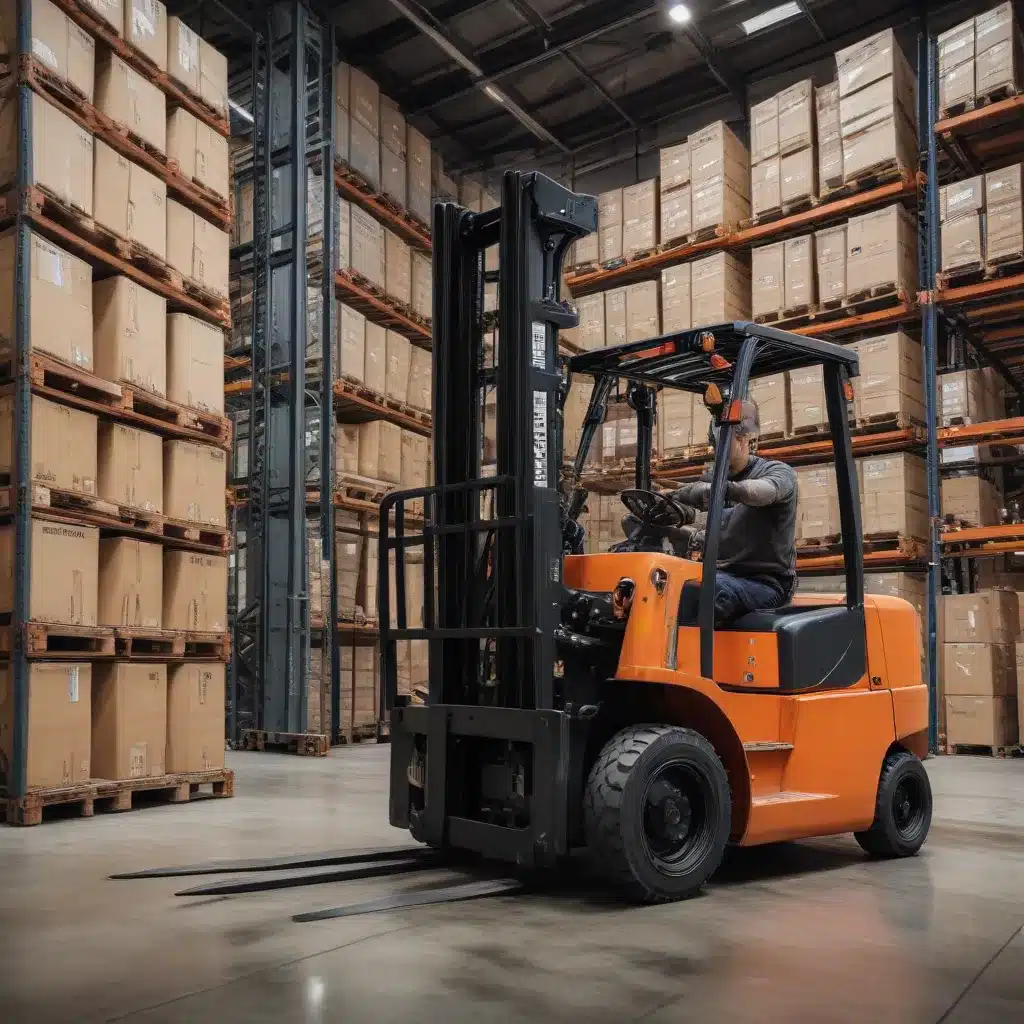
Transforming Forklift Fleets with the Power of Connected Sensors and Advanced Analytics
In the rapidly evolving landscape of warehouse operations and logistics, the convergence of the Internet of Things (IoT) and big data analytics is poised to revolutionize the way we approach forklift maintenance and fleet management. By harnessing the wealth of operational data generated by connected forklift sensors, organizations can unlock unprecedented insights, paving the way for enhanced efficiency, improved safety, and significant cost savings.
Bridging the Gap Between Maintenance and Performance
Traditionally, forklift maintenance has relied heavily on a reactive approach, with repairs and servicing triggered by breakdowns or predetermined schedules. However, this model often falls short in addressing the unique demands and usage patterns of individual forklifts. The integration of IoT technology introduces a transformative shift, enabling a proactive, data-driven approach to maintenance.
By equipping forklifts with a network of connected sensors, organizations can gather a wealth of real-time data, including engine diagnostics, usage patterns, and environmental conditions. This data can then be seamlessly integrated with advanced analytics platforms, such as those offered by Forklift Reviews, to uncover valuable insights.
Key Benefits of IoT-Enabled Forklift Maintenance:
-
Predictive Maintenance: Leveraging machine learning algorithms and predictive analytics, organizations can now anticipate potential equipment failures before they occur. This allows maintenance teams to schedule proactive interventions, minimizing unplanned downtime and optimizing asset utilization.
-
Condition-Based Monitoring: IoT sensors continuously monitor the health and performance of each forklift, providing real-time data on critical factors like wear and tear, energy consumption, and operational efficiency. This enables managers to make informed decisions about maintenance schedules, optimizing resource allocation and extending the lifespan of their equipment.
-
Improved Safety: By tracking operator behavior, load capacities, and environmental factors, IoT-enabled forklifts can identify unsafe practices and trigger alerts, empowering organizations to enhance their safety protocols and reduce the risk of accidents.
-
Enhanced Visibility and Reporting: Comprehensive data collection and analytics platforms offer a holistic view of the entire forklift fleet, enabling managers to generate detailed reports on utilization, maintenance history, and operational trends. This data-driven approach supports informed decision-making and facilitates compliance with industry regulations.
Unlocking the Potential of Big Data in Forklift Management
The abundance of data generated by IoT-enabled forklifts opens the door to powerful big data analytics, transforming the way organizations approach fleet optimization and operational efficiency.
Leveraging Big Data for Forklift Fleet Optimization:
-
Route Optimization: By analyzing GPS data, usage patterns, and traffic conditions, organizations can optimize forklift routes, reducing travel time, fuel consumption, and associated costs.
-
Inventory Management: Integrating forklift data with warehouse management systems enables real-time tracking of inventory levels, streamlining stocking and replenishment processes.
-
Workforce Productivity: Insights into operator behavior, task completion times, and workflow patterns can help identify areas for productivity improvements and workforce training.
-
Energy Efficiency: Monitoring energy consumption and utilization trends can inform decisions about fleet composition, charging infrastructure, and energy-saving initiatives, contributing to sustainability and cost-savings goals.
Overcoming Challenges and Embracing the Future of Forklift Maintenance
While the potential of IoT and big data in forklift management is undeniable, the successful implementation of these technologies requires a carefully orchestrated strategy. Organizations must address challenges related to data integration, cybersecurity, and workforce adoption to unlock the full benefits of this transformative approach.
Strategies for Successful IoT and Big Data Integration in Forklift Maintenance:
-
Data Consolidation and Integration: Seamlessly integrating data from various IoT sensors, fleet management systems, and enterprise software is crucial for creating a comprehensive view of forklift operations. Partnering with providers that offer interoperable solutions can simplify this process.
-
Cybersecurity and Data Privacy: Robust data security measures, including encryption, access controls, and incident response plans, are essential to protect sensitive operational and asset information.
-
Workforce Upskilling and Change Management: Equipping maintenance teams and fleet managers with the necessary skills to leverage data-driven insights is key to fostering a culture of continuous improvement. Comprehensive training and change management initiatives can help overcome resistance to new technologies.
-
Scalability and Flexibility: As organizations grow and their operational needs evolve, their IoT and big data solutions must be able to scale and adapt accordingly. Partnering with providers that offer scalable, modular, and future-proof platforms can ensure long-term viability.
By embracing the convergence of IoT and big data in forklift maintenance, organizations can unlock a new era of operational efficiency, safety, and cost optimization. As the industry continues to evolve, those who harness the power of connected sensors and advanced analytics will emerge as leaders in the dynamic world of warehouse and logistics management.
Conclusion: Driving Forklift Fleet Excellence through Innovative Technology
The integration of IoT and big data analytics in forklift maintenance represents a transformative shift in the way organizations approach fleet management. By leveraging connected sensors and data-driven insights, businesses can transition from reactive to proactive maintenance strategies, optimize their operations, and enhance safety measures. As the industry continues to evolve, the ability to unlock the full potential of these technologies will be a key differentiator, empowering organizations to navigate the complex landscape of warehouse and logistics management with confidence.
To stay ahead of the curve, Forklift Reviews encourages industry professionals to explore the latest developments in IoT-enabled forklift maintenance and the power of big data analytics. By embracing these innovative solutions, organizations can unlock unprecedented operational insights, drive sustainable growth, and redefine the standards of excellence in the dynamic world of material handling.

